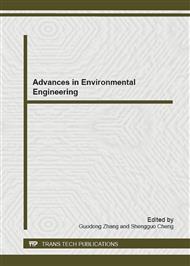[1]
Lianggao ZHANG: Another View of the History of Ba, China Architecture & Building Press, China, Beijing (2006) in press. (in Chinese)
Google Scholar
[2]
Cheng ZH., Yishun ZH., Chaogui ZH., Chunmei M.and Lan L.: Acta Geographica Sinica,Vol. 62,No.3 (Mar.,2007), p.228~235. (in Chinese)
Google Scholar
[3]
Lianggao ZHANG: Unpublished recorded conversations, China, Wuhan (2012). (in Chinese)
Google Scholar
[4]
Drawn on the basis of the maps in: The Yangtze River Basin Atla, edited by Yu CHEN,Jinshi WEI.,Science Press, China, Beijing (2001) in press. (in Chinese)
Google Scholar
[5]
Drawn on the basis of the maps in: The Yangtze River Basin Atlas, edited by the Yangtze River Water Resources Commission in the Ministry of Water Resources, SinoMaps Press, China, Beijing (1999) in press. (in Chinese)
DOI: 10.1007/978-981-16-4927-1_7
Google Scholar
[6]
Drawn according to the aerial graph in: http://ditu.google.cn/.(in Chinese)
Google Scholar
[7]
The Cultural Relic Management Committee in Hubei province: Archaeology, No.8 (1965), p.377~378. (in Chinese)
Google Scholar
[8]
Traced according to the map in: Hubei Museum: Acta Archaeologica Sinica, No.3 (1982), p.326. (in Chinese)
Google Scholar
[9]
Jiabing S., Jiping M., Zhidong L., Quanxi Y.: Remote Sensing Information, No.1 (1993), p. Interleaf,colorgraph 2. (in Chinese)
Google Scholar
[10]
Wenwei NI (Qing):The Government Record of Jingzhou (Guang Xu)·Preface·Maps, Jiangsu Classics Publishing House, China, Nanjing (2001) in press, provided by Professor Ding Jiayuan at Jingzhou Museum. (in Chinese)
Google Scholar
[11]
The committee of Shashi Place Names: The records of Shashi Place Names, The committee of Shashi Place Names, China, Shashi (1984) in press. (in Chinese)
DOI: 10.1007/978-3-540-93824-8_6884
Google Scholar
[12]
The Land Condition of the Central Area of Jingzhou City (1995) in: The master planning of Jingzhou City(1995~2010), information on: http://www.jzgh.gov.cn/.(in Chinese)
Google Scholar
[13]
The Land Condition of the Central Area of Jingzhou City (2009) in: The master planning of Jingzhou City(2010~2020), provided by Jingzhou Urban Planning Bureau. (in Chinese)
Google Scholar
[14]
Bing ZHAO: Huazhong Architecture, No.1 (2011), p.1. (in Chinese)
Google Scholar


